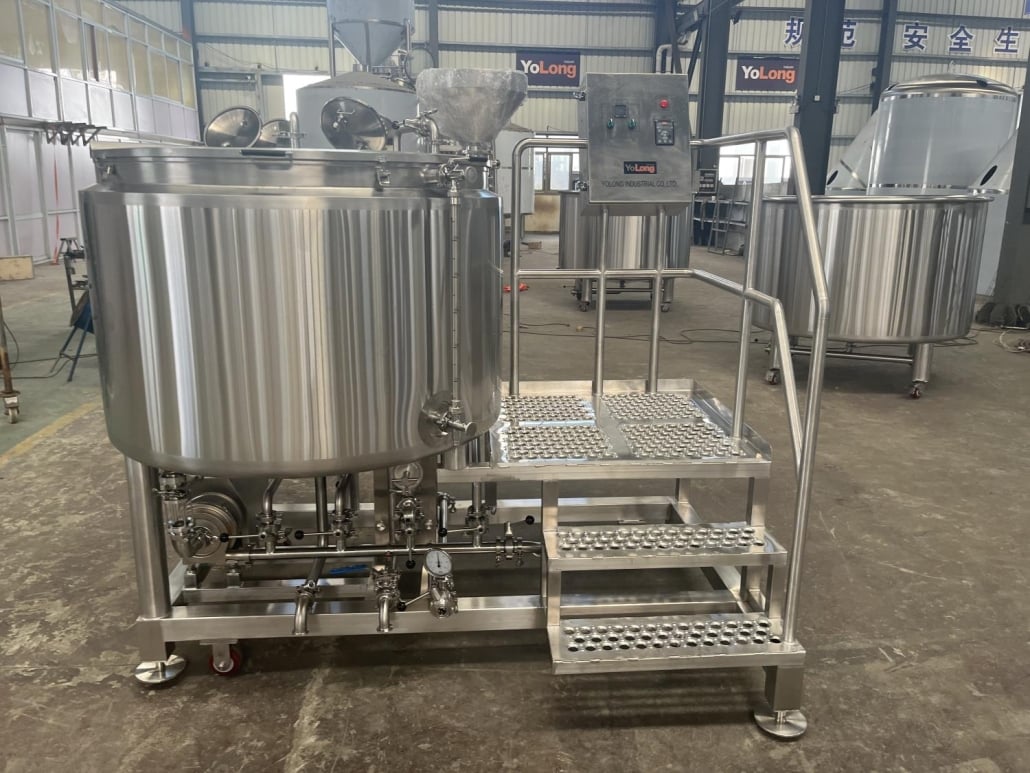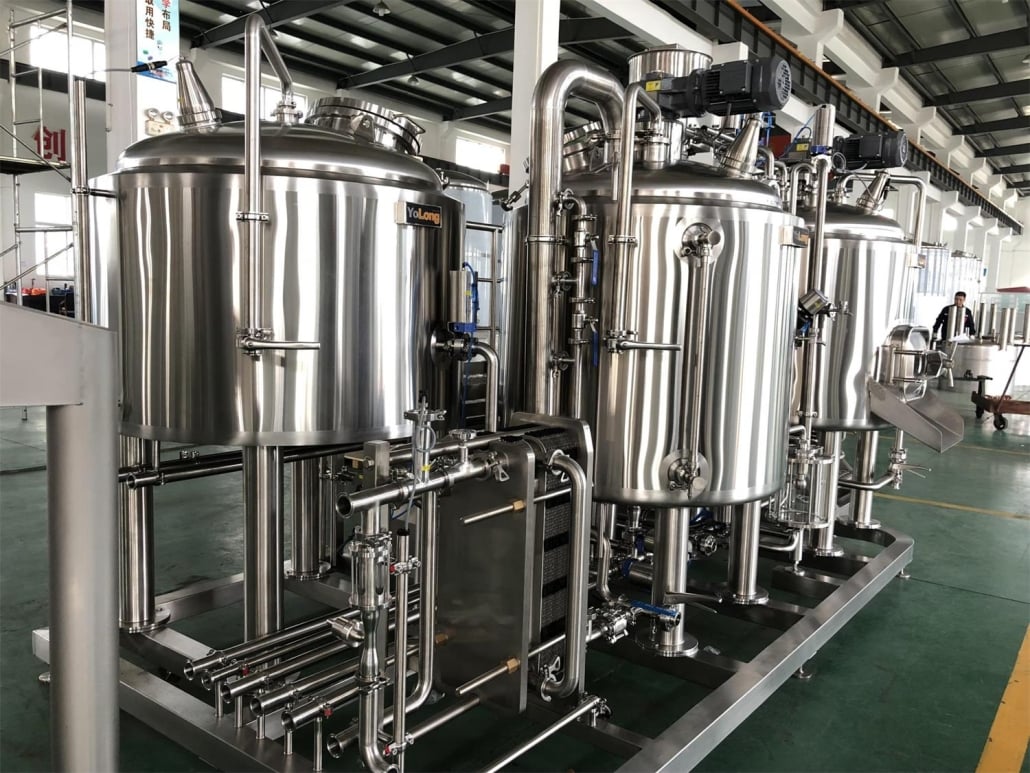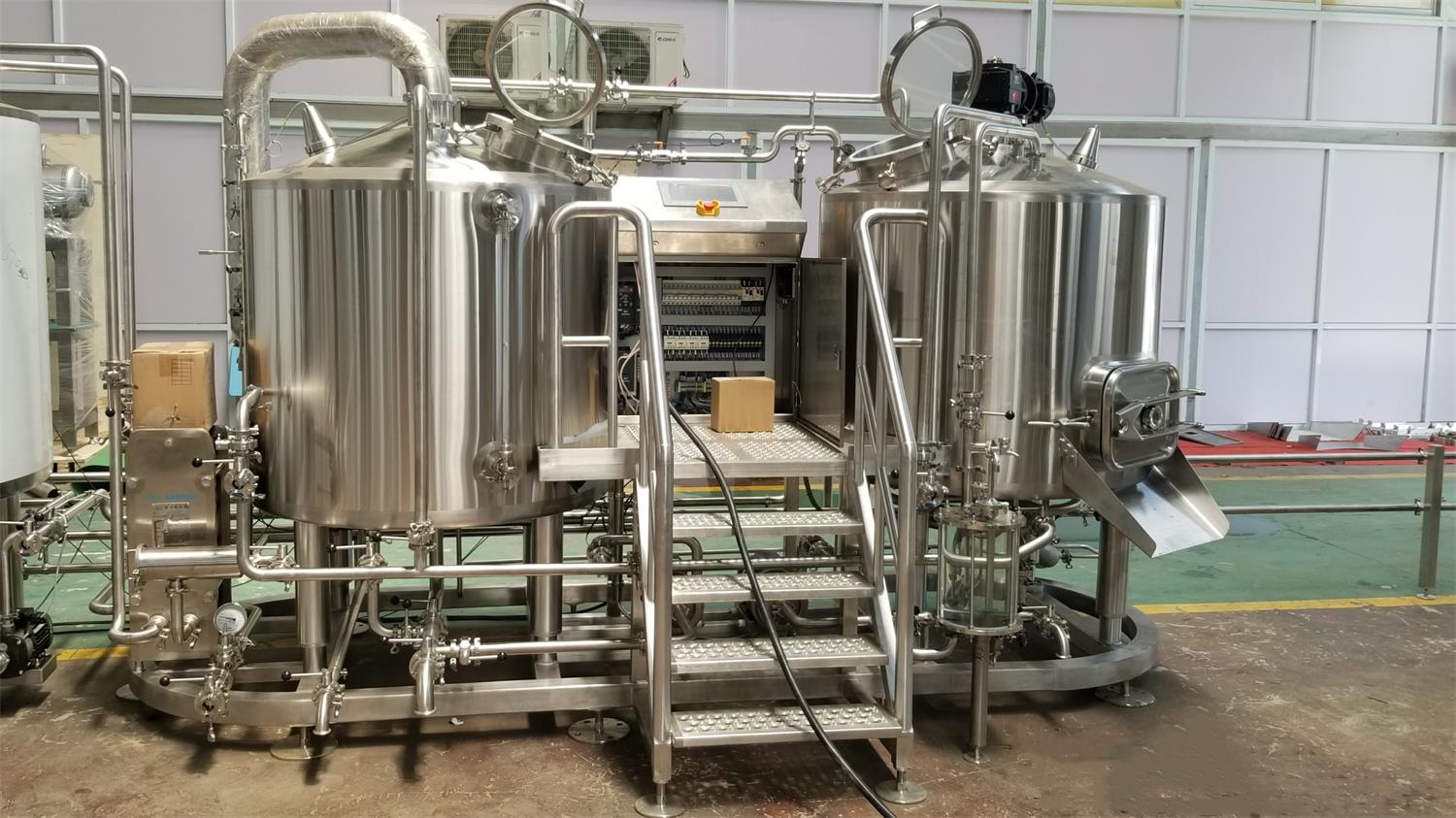Commercial Beer Brewing Systems:15 Essential Things to Know
Introduction
When it comes to producing beer on a commercial scale, the art of brewing transforms into a complex science. Commercial beer brewing systems are the backbone of the beer industry, enabling breweries to create large quantities of beer while maintaining quality and consistency. In this article, we’ll dive deep into the world of commercial beer brewing systems, exploring their types, key components, brewing process, selection criteria, installation, maintenance, advantages, challenges, sustainability, and future trends.
What are Commercial Beer Brewing Systems?
Commercial beer brewing systems are advanced setups designed to brew beer in large quantities for commercial purposes. Unlike homebrewing kits, these systems are equipped with sophisticated technology and high-capacity vessels to handle significant production volumes. From brewpubs and microbreweries to craft breweries and large industrial facilities, various establishments rely on these systems to meet the demands of beer enthusiasts worldwide.

Types of Commercial Beer Brewing Systems
Brewpub Systems
Brewpub systems are compact brewing setups primarily used within the premises of restaurants or pubs. They allow these establishments to offer their own freshly brewed beer, adding a unique touch to their culinary experience.
Microbrewery Systems
Microbrewery systems are small-scale setups with more extensive capabilities than brewpub systems. They are dedicated breweries producing craft beer for distribution in local markets.
Craft Brewery Systems
Craft brewery systems are medium-sized setups suitable for producing larger quantities of beer and distributing it across regions or states. They maintain the essence of craft brewing while catering to a broader audience.
Industrial Brewery Systems
Industrial brewery systems are large-scale operations with significant production capabilities. These breweries supply beer on a national or even international scale, making them major players in the beer industry.
Key Components of Commercial Beer Brewing Systems
Mash Tun
The mash tun is a vessel where milled grains are mixed with hot water to convert starches into fermentable sugars.
Brew Kettle
The brew kettle is where the sugary liquid obtained from the mash tun (wort) is boiled, hops are added, and flavors are extracted.
Fermentation Tanks
Fermentation tanks are vessels where yeast is added to the wort to convert sugars into alcohol and carbon dioxide.
Cooling System
The cooling system helps in rapidly cooling the boiled wort before it goes into the fermentation tanks.
Filtration System
The filtration system is used to clarify the beer by removing any remaining solids or impurities.
Control System
The control system automates and regulates various brewing parameters like temperature, pressure, and timings.
Cleaning System
The cleaning system ensures proper sanitation and hygiene of the brewing equipment.
The Brewing Process with Commercial Beer Brewing Systems
Malting
The brewing process begins with malting, where grains like barley are soaked in water and allowed to germinate. The germinated grains are then dried in a kiln to produce malt, which is the foundation of beer flavor.
Mashing
In the mash tun, the malt is mixed with hot water to create a thick mixture known as the “mash.” During this process, enzymes break down the starches into fermentable sugars, creating the wort.
Boiling
The wort is transferred to the brew kettle, where it is boiled. Hops are added during this stage to impart bitterness, aroma, and flavor to the beer.
Fermentation
After boiling, the wort is cooled and transferred to fermentation tanks. Yeast is added to initiate the fermentation process, during which sugars are converted into alcohol and carbon dioxide.
Conditioning
Once fermentation is complete, the beer undergoes a conditioning phase where it matures and develops its flavors.
Packaging
Finally, the beer is filtered, carbonated, and packaged into bottles, cans, or kegs for distribution and consumption.

Factors to Consider When Choosing a Commercial Beer Brewing System
Capacity and Production Volume
Selecting a system with the appropriate capacity ensures that production demands are met efficiently.
Space and Layout
The available space and layout of the brewery should be considered to accommodate the chosen system.
Automation and Technology
The level of automation and technology should align with the brewery’s operational capabilities and staff expertise.
Energy Efficiency
Opting for energy-efficient systems can help reduce operational costs and environmental impact.
Quality and Consistency
Ensuring the system maintains the desired quality and consistency of the beer is crucial for brand reputation.
Budget and Cost
The initial investment, ongoing operational costs, and return on investment should be evaluated before making a decision.
Installation and Setup of Commercial Beer Brewing Systems
Location and Facility Preparation
Choosing an appropriate location and preparing the facility to accommodate the brewing system is essential.
Equipment Delivery and Assembly
Ensuring smooth delivery and assembly of the brewing equipment to avoid delays.
Utility Connections
Proper connections to water, electricity, and steam supply are crucial for the system’s functionality.
Testing and Commissioning
Thorough testing and commissioning of the system to ensure everything works correctly.
Maintenance and Cleaning of Commercial Beer Brewing Systems
Regular Maintenance Checks
Performing routine maintenance checks to prevent breakdowns and ensure optimal performance.
Cleaning Procedures
Following strict cleaning protocols to maintain beer quality and hygiene.
Troubleshooting Common Issues
Having a troubleshooting plan in place to address common system issues promptly.
Advantages of Commercial Beer Brewing Systems
Increased Production Capacity
Commercial beer brewing systems allow breweries to produce beer in larger quantities, meeting the demand of a wider consumer base.
Quality Control
With advanced technology and automation, these systems offer better control over the brewing process, ensuring consistent beer quality.
Flexibility in Beer Recipes
Brewers can experiment with various beer recipes and styles, offering a diverse range of products to consumers.
Branding and Customization
Breweries can establish their brand identity and customize their beer to stand out in the market.
Business Growth and Expansion
The ability to produce more beer facilitates business growth and potential expansion into new markets.
Challenges with Commercial Beer Brewing Systems
Initial Investment
The upfront cost of acquiring a commercial brewing system can be significant, posing a financial challenge for new or small breweries.
Operational Costs
Running a large-scale brewing operation involves higher utility and maintenance costs.
Technical Expertise
Properly operating and maintaining a commercial brewing system requires skilled and knowledgeable staff.
Market Competition
The beer industry is highly competitive, and breweries must differentiate themselves to succeed.
Sustainability and Environmental Impact
Water Usage
Breweries need to implement water-saving measures to reduce their environmental footprint.
Energy Consumption
Exploring renewable energy sources and energy-efficient technologies can lower energy consumption.
Waste Management
Proper waste management and recycling strategies are essential to minimize environmental impact.
Trends in Commercial Beer Brewing Systems
Smart Brewing Technology
Automation and data-driven insights are transforming the brewing process.
Eco-Friendly Systems
Breweries are adopting sustainable practices and eco-friendly equipment to reduce their environmental impact.
Collaborative Brewing Spaces
Breweries are collaborating to share resources and expertise, fostering a sense of community.
Low-ABV and Non-Alcoholic Beer Production
The demand for low-alcohol and non-alcoholic beer options is on the rise.

The Future of Commercial Beer Brewing Systems
As technology advances, commercial beer brewing systems will become more efficient, sustainable, and versatile. Breweries will continue to innovate, creating unique beer experiences for consumers worldwide.
Conclusion
Commercial beer brewing systems play a pivotal role in the beer industry, enabling breweries to produce large quantities of high-quality beer efficiently. From small craft breweries to large industrial facilities, these systems cater to a wide range of brewing needs. With the right selection, installation, and maintenance, breweries can achieve success in a competitive market while embracing sustainable practices for a better future.
FAQs
What is the difference between a microbrewery and an industrial brewery?
Microbreweries are smaller-scale operations, focusing on craft beer production for local markets, while industrial breweries are large-scale facilities distributing beer nationally or internationally.
How long does the brewing process take with a commercial beer brewing system?
The brewing process can take anywhere from a few weeks to several months, depending on the beer style and fermentation requirements.
Can brewpub systems be used for large-scale production?
Brewpub systems are designed for smaller-scale production, and while they can be expanded to some extent, they are not ideal for large-scale operations.
What are the most critical factors to consider when selecting a commercial beer brewing system?
Capacity, space, automation level, energy efficiency, and budget are among the essential factors to consider.
How can breweries reduce their environmental impact?
Breweries can adopt water-saving measures, explore renewable energy sources, and implement waste management and recycling strategies to reduce their environmental footprint.
Frequently Asked Questions (FAQ)
- Q1: What vessel configuration is best for commercial Beer Brewing Systems?
A1: For 10–30 hL, a 3-vessel (mash/lauter + kettle/whirlpool + HLT) balances throughput and cost. For 30+ hL or high SKU volume, a 4-vessel (separate mash, lauter, kettle, whirlpool) enables 3–4 brews/day. - Q2: Which automation features deliver the highest ROI?
A2: Recipe-driven PLC/HMI, automated valve manifolds, inline flow/temperature/DO sensors, conductivity-based CIP endpoints, and remote alarms reduce changeovers, losses, and labor hours. - Q3: What utilities should I plan for before installing a system?
A3: Three-phase power (208–480V), steam or electric heating, 60–90 psi compressed air, process water targeting 3–5 hL water/hL beer (≤3 best-in-class), floor drains, make-up air/venting, and adequate glycol capacity. - Q4: How do I ensure consistent quality across batches and sites?
A4: Standardize SOPs, calibrate sensors, monitor KPIs (brewhouse efficiency, TPO/DO, energy/water intensity), and use data historians connected via OPC UA/MQTT for multi-site visibility. - Q5: What sustainability upgrades are most impactful?
A5: Heat recovery (vapor condenser to preheat HLT), optimized boil-off control, deaerated-water reuse, CO2 purge optimization or capture, and CIP chemical/water reduction with conductivity and temperature control.
2025 Industry Trends for Commercial Beer Brewing Systems
- AI-assisted controls: Model-predictive mash/boil and fermenter profiling trim energy 10–20% while tightening specs.
- Low-oxygen automation: Auto deaerated-water blending and transfer blanketing standardize shelf-life gains for hop-forward styles.
- CO2 and heat recovery: Increased adoption of compact stack condensers and small-scale CO2 recovery skids in mid-size plants.
- OT cybersecurity: Role-based access, MFA, network segmentation, and audit trails become procurement requirements.
- Data interoperability: OPC UA-native skids and cloud dashboards unify brewhouse, cellar, and packaging KPIs.
2025 Benchmarks and Cost/Performance Metrics
| Metric | 2022 Typical | 2025 Best-in-Class | Notes / Sources |
|---|---|---|---|
| Water use (hL water/hL beer) | 4.5–7.0 | 2.6–3.5 | Brewers Association Sustainability Benchmarking |
| Brewhouse energy (kWh/hL) | 8–12 | 5–8 | MBAA case studies; heat recovery + boil control |
| CO2 use (kg/hL packaged) | 1.2–2.0 | 0.5–1.0 | BA Packaging resources; purge optimization/capture |
| TPO finished beer (ppb) | 75–150 | <30–50 | ASBC Beer-40 methods |
| Product loss brewhouse→bright (%) | 3–5 | 1.5–3.0 | Trub/yeast handling, inline sensors |
| Changeover (min, brew-to-brew) | 45–60 | 20–35 | 4-vessel + automation |
| Unplanned downtime (%) | 6–10 | <3 | Predictive maintenance, remote diagnostics |
Selected sources:
- Brewers Association: sustainability, packaging, and benchmarking — https://www.brewersassociation.org
- Master Brewers Association of the Americas (MBAA) Technical Quarterly — https://www.mbaa.com
- American Society of Brewing Chemists (ASBC) Methods — https://www.asbcnet.org
Latest Research Cases
Case Study 1: Heat and CO2 Recovery Upgrade in a Mid-Size Craft Brewery (2025)
Background: A 30 hL craft brewery faced rising utilities and CO2 purchase costs while expanding distribution.
Solution: Installed stack vapor condenser feeding HLT preheat, optimized boil vigor with AI controller, and added a compact CO2 recovery skid for purge/packaging.
Results: Brewhouse energy reduced 18%; water intensity from 4.9 to 3.4 hL/hL; purchased CO2 cut 40%; payback estimated at 28 months. Shared at an MBAA district seminar (2025).
Case Study 2: Low-Oxygen Transfers Improve IPA Shelf Life (2024)
Background: Warm-chain shelf life of flagship IPA plateaued at ~60–75 days.
Solution: Implemented in-line DO meter, automated CO2/N2 blanketing on hot- and cold-side transfers, and standardized purge sequences via PLC recipes.
Results: Post-transfer DO reduced to 25–40 ppb; sensory shelf life extended to ~120 days; stale/oxidized complaints decreased 55%. Referenced in a Brewers Association packaging webinar (2024).
Expert Opinions
- Dr. Tom Shellhammer, Professor, Oregon State University
Viewpoint: “Automation that manages oxygen exposure and thermal profiles has outsized impact on hop aroma retention and overall stability.” Source: OSU Hop & Brewing research talks/publications. - Mary Pellettieri, Brewing Quality Consultant; Author of Quality Management for Breweries
Viewpoint: “Build quality into Beer Brewing Systems with calibration, SPC at critical points, and validated CIP—these fundamentals protect brand consistency.” Source: Industry workshops and QA literature. - Ashleigh Carter, Co-Founder and Head Brewer, Bierstadt Lagerhaus
Viewpoint: “Right-sized vessels and disciplined process timing beat raw capacity—design your system around the beers you actually brew.” Source: Conference panels/interviews.
Practical Tools/Resources
- Brewers Association: Sustainability benchmarking, packaging QA, and calculators — https://www.brewersassociation.org
- ASBC Methods of Analysis (Beer-40 TPO, DO, bitterness, pH, micro) — https://www.asbcnet.org
- MBAA Technical Quarterly & webinars: automation, heat recovery, CO2 use — https://www.mbaa.com
- OPC Foundation (OPC UA): interoperability standards for brewery OT — https://opcfoundation.org
- NIST Cybersecurity Framework: guidance for securing brewery control networks — https://www.nist.gov/cyberframework
- DSIRE USA: rebates for high-efficiency boilers, VFDs, heat recovery — https://www.dsireusa.org
- Brewer’s Friend and BeerSmith: planning tools for recipe and brewhouse efficiency — https://www.brewersfriend.com | https://beersmith.com
Last updated: 2025-09-01
Changelog: Added 5 FAQs focused on vessel configuration, automation ROI, utilities, quality assurance, and sustainability; inserted 2025 trends with benchmark table and sources; included two recent case studies on heat/CO2 recovery and low-oxygen transfers; added expert viewpoints and practical resources
Next review date & triggers: 2026-03-01 or earlier if BA releases new sustainability KPIs, ASBC updates oxygen methods, or major vendor releases change automation/CO2 recovery economics
Share this entry
Interested in learning more about Brewing Systems including additional details and pricing information? Please use the form below to contact us!
YOLONG BREWERY EQUIPMENT FAQS
- Commercial Brewery / Craft Brewery / Microbrewery / Nanobrewery
- What is The Difference Between Craft Beer and Industrial Beer?
- The Bespoke Differences In Custom Brewing Systems
- Everything You Need to Know About Kettle Souring
- How to Choose Brewing Equipment for Your business?
- How To Choose The-Best Partner To Build Your Commercial Microbrewing System?
- Two Detection Sensors That You Need To Use In Your Brewhouse System
- Remote Control Applications in Brewing Equipment/How does it work?
- How To Clean Your Brand New Brewery Tanks?

